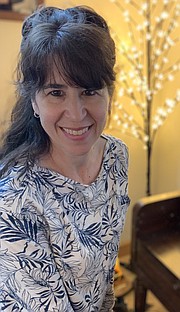The eyes have it
Artist’s painting shows how eyes tell stories when faces can’t
Occupational therapist Karin Daur Austin has done some soul searching lately ... and she's found herself peering into the souls of others.
Austin, of Coeur d’Alene, works at Kootenai Health, where she has recently spent time screening people for fever and COVID-19 symptoms before they are allowed to enter the hospital. Above the protective face masks that hide the smiles and frowns, she realized how eyes have become such a focal point and main feature of expression.
"I just really noticed the weight in people's eyes. They were so heavy with worry, fear, anxiety," Austin said Thursday. "It really struck me."
Unable to get it off her mind, Austin, who is an artist, picked up her paintbrush and created a watercolor portrait of a face, wearing a mask, eyes filled with uncertainty.
"That's the soul of an artist, to express what you're feeling," she said. "Ever since I painted that, I just really look into people's eyes to really try and read them."
The face is of no one in particular, she said.
"It’s all of us,” she said. "It could be any of us."
In a time when faces are buried under fabric, and when keeping distance is mandatory, Austin pointed out how people are having to use different senses to communicate.
"I think just by human nature, when we see somebody, the first thing we're inclined to see is a person's smile. Now we’re having to look at their eyes," she said. "I think you can see a lot in people’s eyes, just the way they flicker, the crinkle around the eyes.
"You can see a lot in a person’s eyes if you look long enough," she continued. "More than just a glance, more than a passing moment. If you look into someone's eyes, you can feel what that person is thinking without having to talk."
Austin often works with people who have suffered strokes and other conditions that can affect their ability to speak, so she has experience understanding nonverbal communication.
Now, it seems like a skill we're all learning. And along with that skill, Austin said, comes patience.
"I think it’s teaching us to be patient when we’re interacting with people," she said. "When we interact with people, rather than a quick glance, now we’re having to use a different sense. We’re having to use our sense of feeling. What are the eyes telling us? We're having to read somebody's expression a little more deeply."
How do we know people are smiling when looking at their eyes?
"There is a look that we can tell if we are observant enough," Austin said. "When someone smiles, it’s like they are dancing with their eyes. And when I am wearing a mask, I try to engage people in that dance with their eyes."



